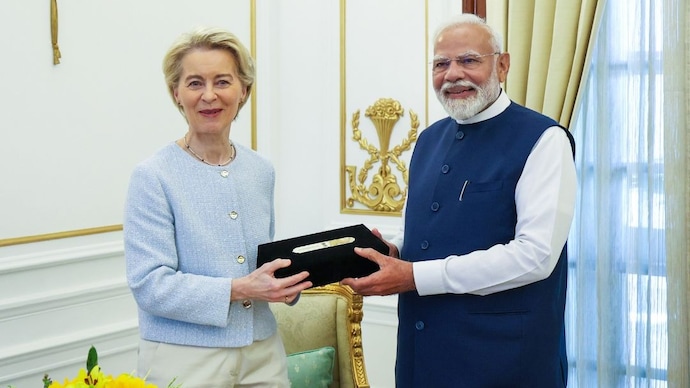
When U.S. President Donald Trump urged Europe to impose tariffs of up to 100 percent on India, Brussels chose a different path. Instead of following Washington’s pressure tactics, the European Union unveiled a “New Strategic EU-India Agenda”, aiming to reshape ties across trade, technology, security, climate, and connectivity.
Europe Rejects Washington’s Pressure
Trump had demanded NATO allies impose punitive tariffs on India and China, claiming sanctions were necessary to cut off Russia’s war chest due to their continued imports of Russian oil. His officials even floated tariff hikes ranging from 50 to 100 percent — a move that risked disrupting global supply chains overnight.
The EU refused. Brussels acknowledged the reality: Europe still relies on Russian gas, and targeting India — the world’s fastest-growing major economy — would backfire. Instead, the bloc chose to strengthen investment and trade ties with New Delhi.
EU-India Trade Already Booming
The new agenda was unveiled in September 2025 during a high-profile EU delegation visit to India. European Commission President Ursula von der Leyen summed it up: “Europe is open for business. And we are ready to invest in our shared future with India.”
Trade figures highlight the momentum: bilateral trade in goods stood at $120 billion in 2024, making the EU India’s largest trading partner. Around 6,000 European companies now operate in India, directly employing three million people. A free trade agreement (FTA), expected to be finalized by the end of 2025, could become one of the world’s largest trade deals.
What’s in the New Strategic Agenda
The plan extends far beyond trade. Key pillars include:
- Technology & Innovation: Cooperation in semiconductors, digital innovation, and a potential EU–India Startup Partnership.
- Clean Energy: Joint projects on green hydrogen, offshore wind, and sustainable finance.
- Defence & Security: Naval exercises in the Indian Ocean and closer defence ties.
- Connectivity: The ambitious India–Middle East–Europe Economic Corridor (IMEC), designed to diversify trade routes and bypass chokepoints.
Strategic Autonomy in Action
For Brussels, this is about more than economics. Partnering with India helps the EU diversify supply chains, balance China’s influence, and assert its strategic autonomy in foreign policy. As the EU’s strategy makes clear, India is not just another partner in the Global South — it is a vital force shaping the global order.
Looking Ahead
Trump may continue to threaten tariffs, but Europe has chosen cooperation over confrontation. If the FTA is finalized in 2025, the EU–India partnership could emerge as a defining pillar of the global economy for decades to come.
For breaking news and live news updates, like us on Facebook or follow us on Twitter and Instagram. Read more on Latest World on thefoxdaily.com.






COMMENTS 0